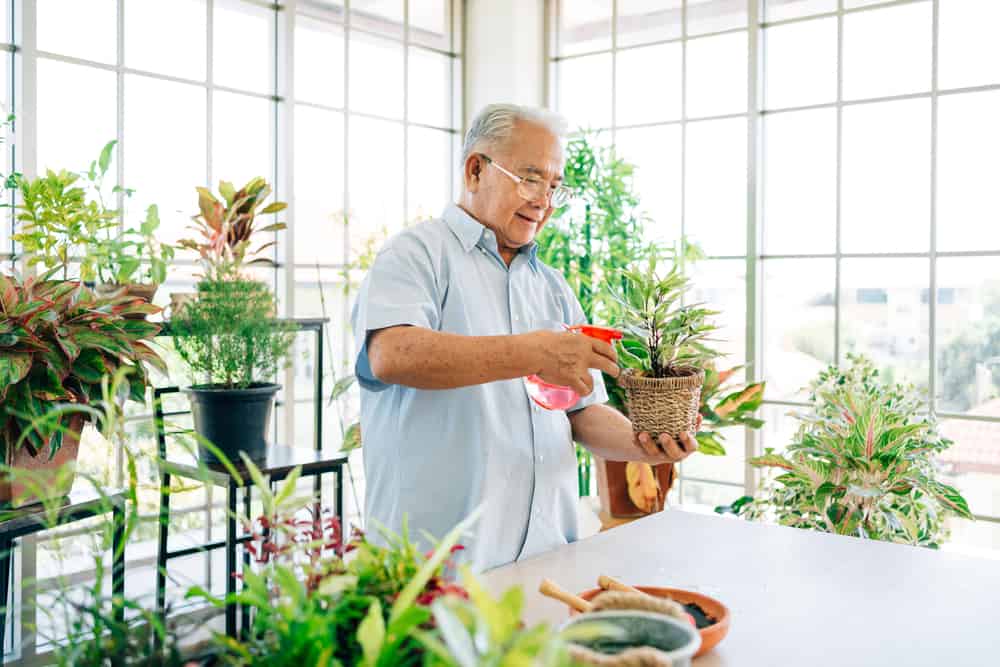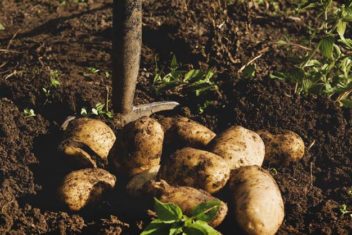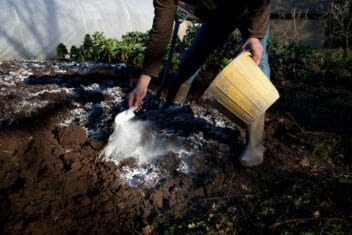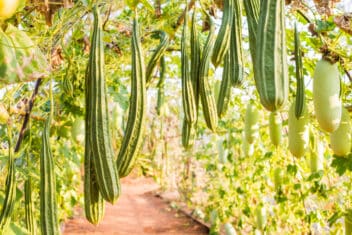Gardening is a wonderful pastime, and it’s something that keeps us fit and healthy. Young gardeners can work all day completing chores, and get up the next day and do it all over again.
As we age, those same chores can take their toll on our bodies, making gardening harder and sometimes less enjoyable. Enjoying plants doesn’t need to be hard work, or even be a hobby for those who have a large outdoor space.
If you love gardening but find it hard to do what you used to, try these senior gardening project ideas to keep you doing what you find pleasure in.
1. Start an Indoor Herb Garden
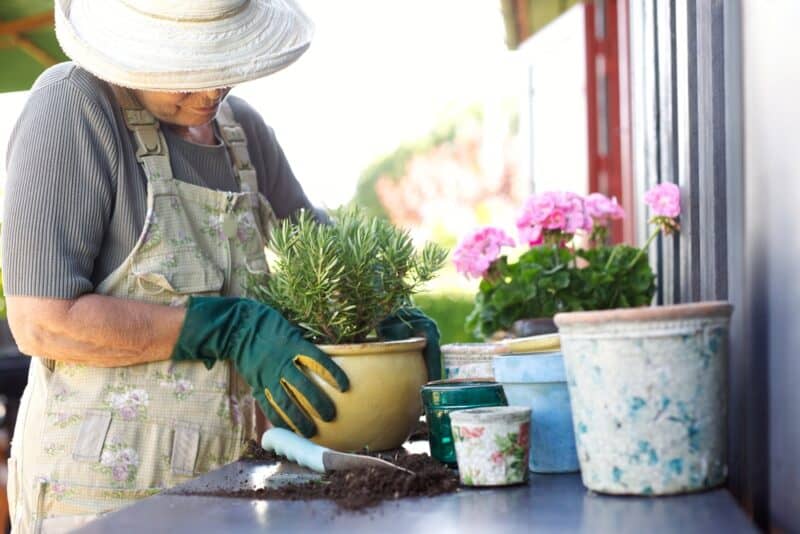
One of the easiest projects to start with is to create an indoor herb garden. Herbs are easy to grow and perfect for indoors or small spaces. You can also have one on a patio or deck, or even put one on your windowsill inside the kitchen for easy and close access.
Herb gardens are perfect for seniors because they also have positive dietary effects, so you get the love of growing plants and access to fresh food.
Some handy tips for a successful indoor herb garden include:
- Provide plenty of light. Direct sunlight through a window can sometimes be too much, but indirect sunlight is perfect. Herbs love six to eight hours of sunlight.
- Herbs prefer temperatures around 65-75ºF, but a little warmer is fine too. Herbs are forgiving.
- Don’t over-water herbs. Allow the top two inches of soil to dry before watering again. If the herbs look like they are struggling, provide a little more.
- Use separate pots for each herb when indoors. Make sure you have good pot drainage and use saucers or similar to catch the water as it leaks through the bottom.
- Try basil, thyme, cilantro, oregano, or sage.
2. Grow Succulents
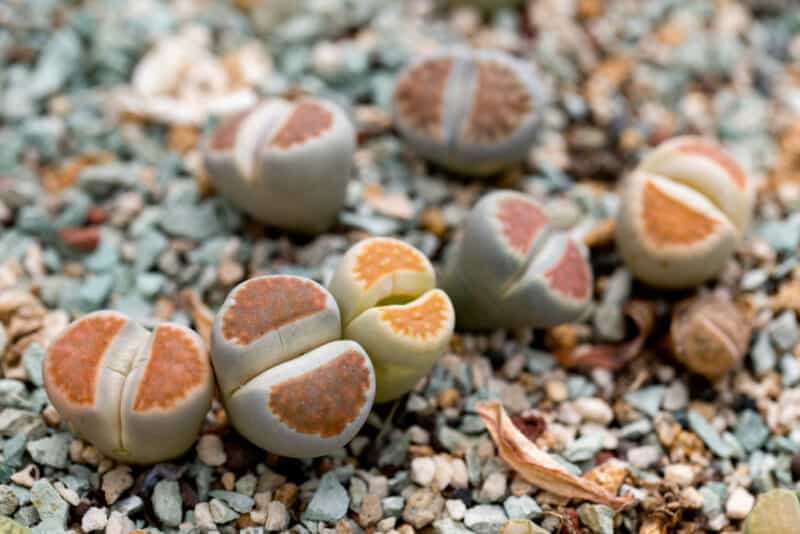
If you love the look of plants but don’t want to go to too much trouble growing them, succulents may be for you. You can grow succulents from as little as a leaf from another succulent, so the outlay should be minimal other than pots and succulent medium.
You could always buy succulents, or if you have access to some plants, propagate your own with these easy steps:
- Take a few leaves off the bottom of your chosen succulent. Gently twist the leaf so that it comes off whole.
- Place the leaf on a dry, warm surface for about three days. They need to dry for a little bit. You want a callus form on the bottom of the leaf where it broke off.
- Use a cactus or succulent mix as a growing medium in your container.
- Lay the leaf on the medium and gently push the bottom part of the leaf just below the surface. Place a number in the same pot if there is space between them.
- Water with a spray bottle daily, and in about 45 days, the plant will be rooted, and you can transplant them into individual pots. It’s really that simple.
Propagating succulents is so easy and such a fun senior gardening project that you could do it to make gifts for friends and family.
3. Start a Terrarium
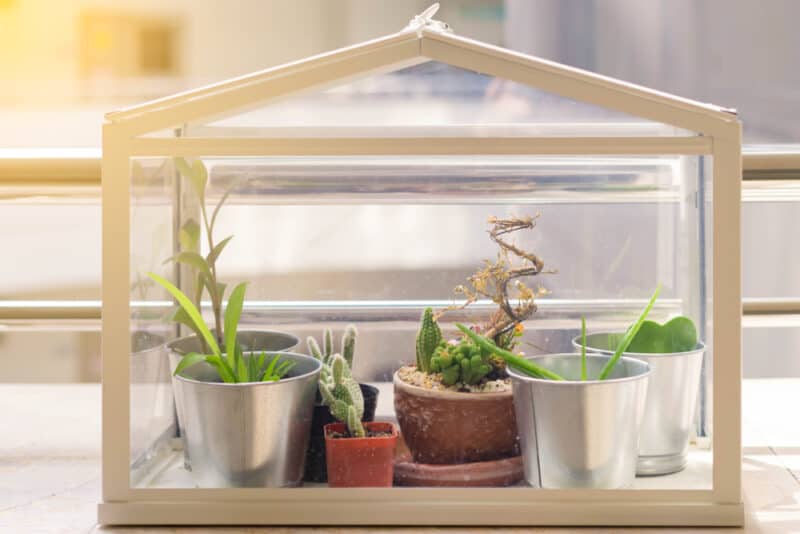
If you want a small, easy senior gardening project, try starting a terrarium. If you don’t know what that is, it’s a miniature garden of moisture-loving plants sealed in glass bottles or large jars. There are also open versions as well.
Follow these easy steps:
- Get a large jar with a big opening. You can buy specific terrarium jars at gardening centers, along with the growing mediums.
- Place a thin layer of horticultural charcoal in the bottom of the jar, followed by a thin layer of lava rock.
- Next, add a layer of moss before adding a medium-like orchid mix.
- Add your plants and any decorative items like shells or driftwood.
- Use plants like baby tears, button ferns, hen and chicks succulents, and sphagnum moss for water retention. Talk to your local garden center for help with the best plants for your size terrarium.
4. Grow Microgreens
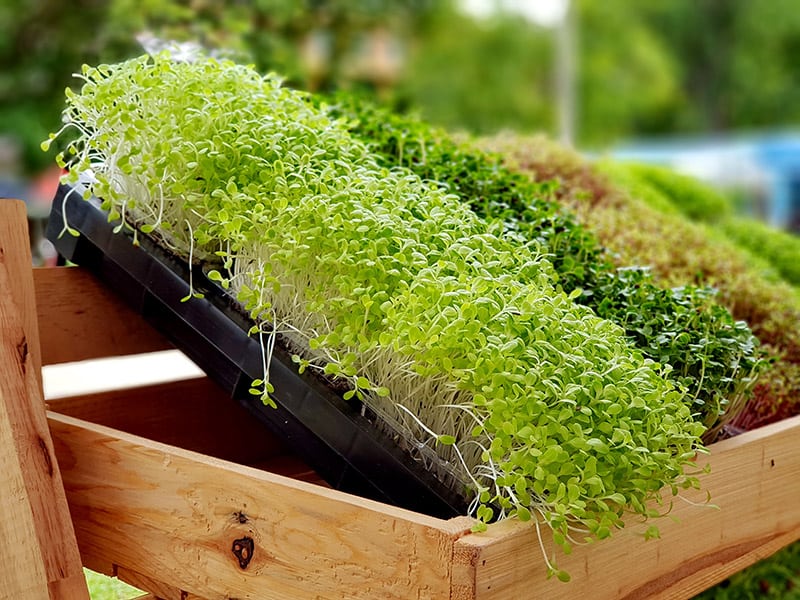
Microgreens take up just a little bit of space, they grow quickly, and they’re healthy additions to salads, stews, soups, egg dishes, and sandwiches. Microgreens take little effort, but you get a lot for it.
Use gardening pots or containers or even old casserole pans. You can use plastic trays from a gardening center or tinfoil cooking trays. Just make sure they are shallow and have drainage.
Fill them with seed-raising medium to just below the rim.
Sprinkle the seeds on the surface and cover lightly with more seed-raising medium. Spray with a water bottle mister regularly.
Let the greens grow to your desired height and harvest when needed. You could try:
- Pea shoots
- Radish shoots
- Sunflower shoots
- Micro kale
- Micro Arugula
You can also buy a microgreen mix, making this senior gardening project even easier to start.
5. Regrow Vegetable Scraps
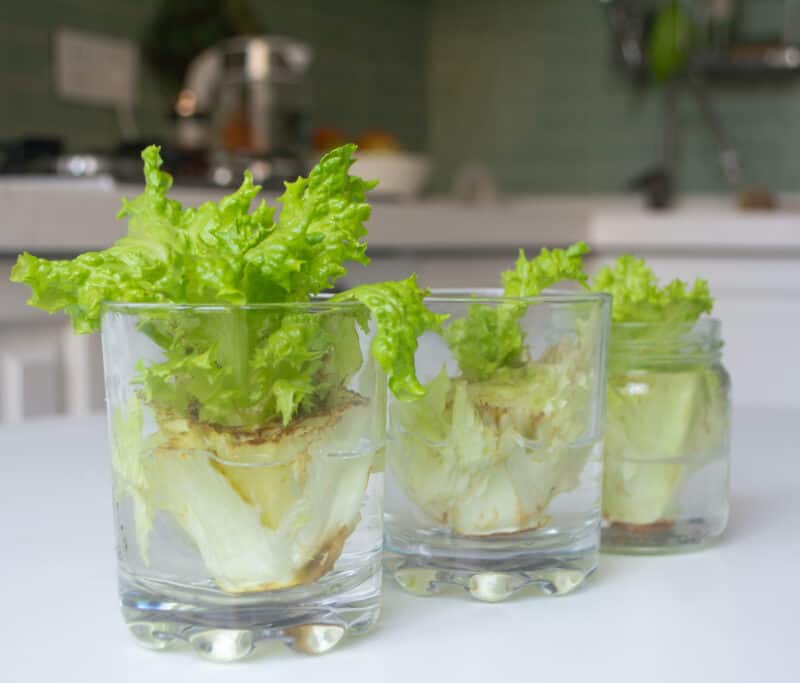
A fun and money-saving senior gardening project that is easy to do is to regrow vegetables from scraps. It’s fun to do with the grandkids as well.
You can grow a few vegetables from scraps, and none easier than romaine lettuce. Simply put the butt in a few inches of water in a cup or bowl, and within a few days, new leaves start to grow.
Take the tops of carrots and place them in a shallow container with water and harvest the greens when they grow. You can do the same with beets, parsnips, and turnips. Also try:
- Lemongrass
- Celery
- Fennel
- Spring Onion
- Basil
6. Make a Japanese Moss Garden
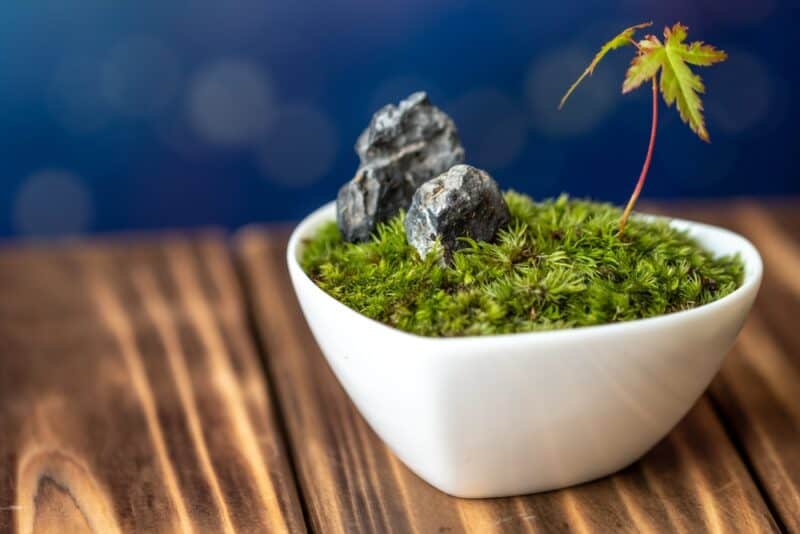
If you have an adventurous spirit, you can create a Japanese moss garden. It’s basically a miniature moss garden you can put on a tabletop or use as a centerpiece. There are several types of moss gardens, including simply growing moss indoors in a decorative way.
Or, there is the practice known as kokedama. It’s a bulb wrapped in moss and held together with twine or thin wire. To start with, use a daffodil or tulip bulb.
Gather what you need first to make it easy.
- A 12-inch square of sheet moss
- Soil mixture comprised of 60% peat soil and 40% garden soil
- A bulb
- String or twine
The sheet moss needs to be double the size of the bulb and you need enough twine to wrap around the bulb about 20 times.
Saturate the moss in water. Add a little moisture to the soil mixture to form a ball that stays together.
Create a hole in the ball, insert the bulb, and then pack the soil around it with your hands. Remove excess water from the moss and wrap it around the ball.
Place the middle of the length of twine on the ball and start winding it around criss-cross style.
Now it’s ready to hang up or place in a decorative bowl. Sit back and watch it grow.
7. Plant Bulbs Indoors
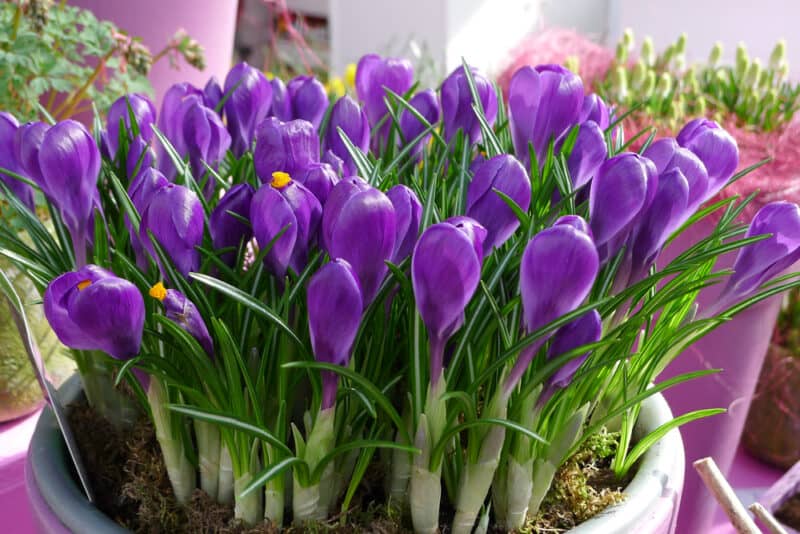
Some people love planting bulbs outside, but may not be able to do it physically anymore. Did you know some bulbs grow just as well inside as outside? It’s a perfect senior gardening project for those who love a little color and fragrance indoors.
Paperwhites grow exceptionally well inside because they don’t need a specific cooling period to bloom.
Use good quality seed-raising soil in a large jar or vase. Plant the bulb with the top quarter sticking out of the soil. Water sparingly so as not to saturate the soil and bulb.
Another way of doing this is to put a deep layer of decorative stones in the jar or vase and place the bulb in, keeping the top quarter above the stones.
Water and watch as the roots grow and the plant grows and then blooms. This is a great way of planting bulbs and enjoying the flowers just like outside in the garden.
8. Raise Moisture Loving Plants for Your Bathroom
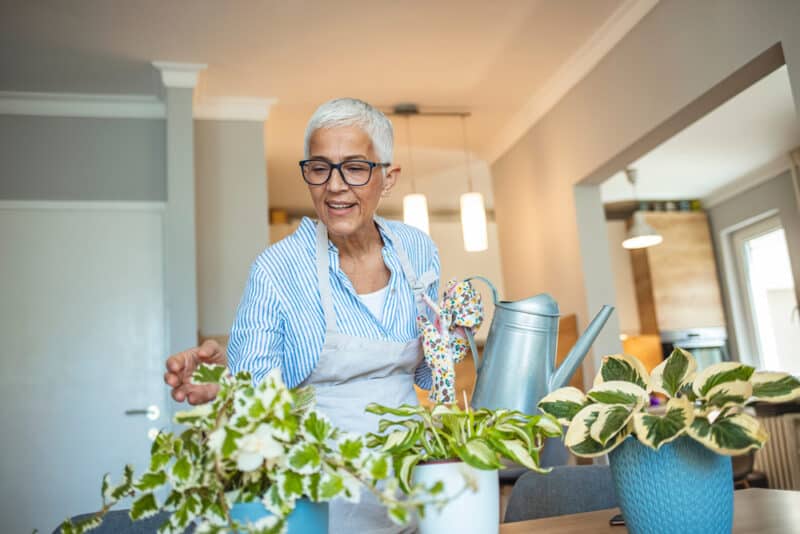
So far, we’ve talked about plants for the kitchen and other rooms in the house, but not the bathroom. Don’t neglect the restroom with your senior gardening projects.
Plants in the bathroom can transform a dreary, boring room into an exciting and comfortable place to relax in the bath or shower, but they have to be the right plants, or they won’t survive. Most bathrooms are reasonably low-light, warm, and humid.
Try:
- Snake Plant
- ZZ Plant
- Maidenhair Fern
- Spider Plant
- Peace Lily
- Heartleaf Philodendron
Once you get good at growing plants for bathrooms, you may be able to sell the extras or give them to your friends.
9. Grow Cacti
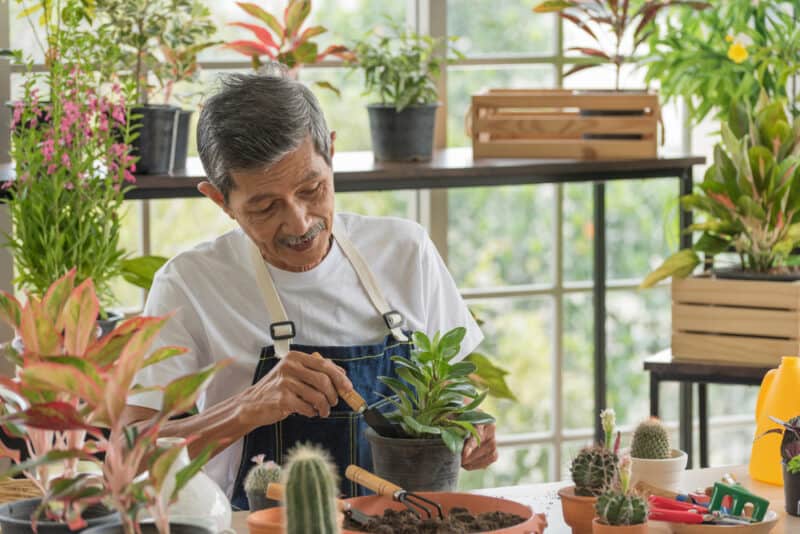
Cacti are low maintenance and thrive in dry conditions, so they are the perfect senior gardening project for those who want to have plants but don’t want to deal with complex needs or too much work.
There are so many varieties of all shapes and sizes. You can have a lot of small ones or a few big ones.
Provide at least four to six hours of sunlight each day. Place them on a bright windowsill and rotate the containers a couple of times a week to make sure the plant gets equal amounts of light and heat on all sides.
Start small. Choose a bunny ear cacti and increase from there. Just be careful to keep pets and the grandkids away from the spikes.
